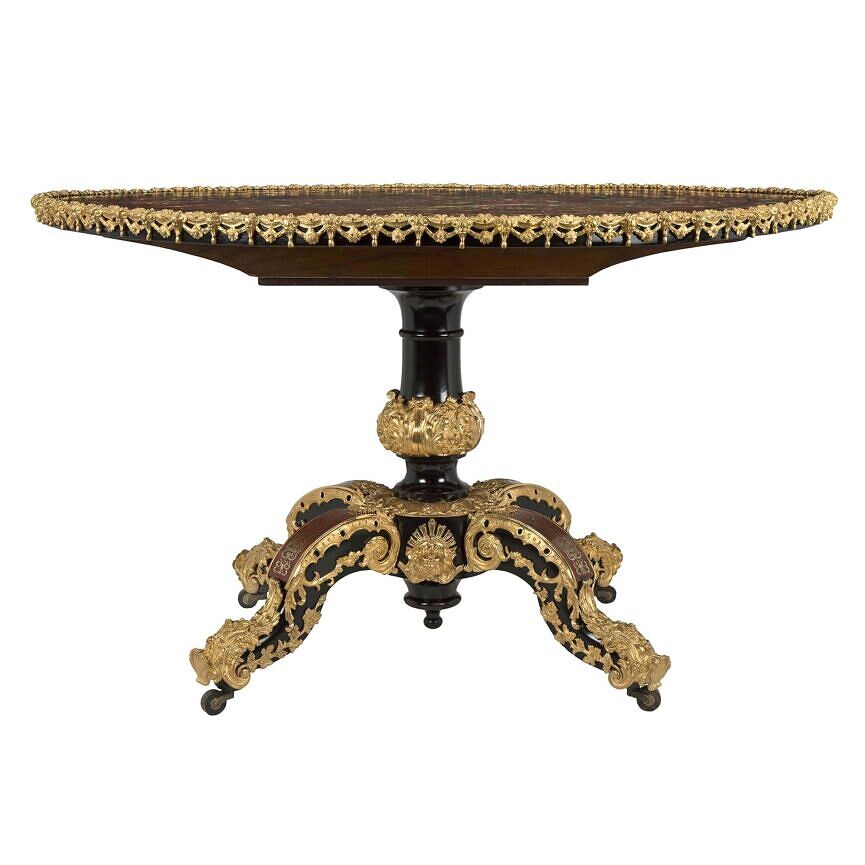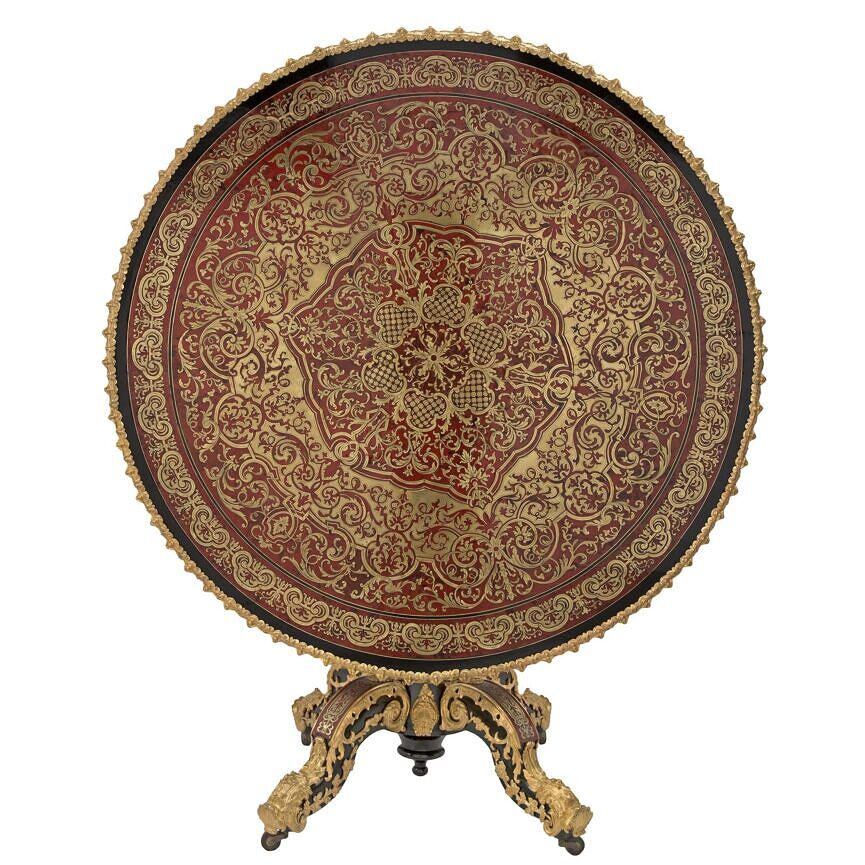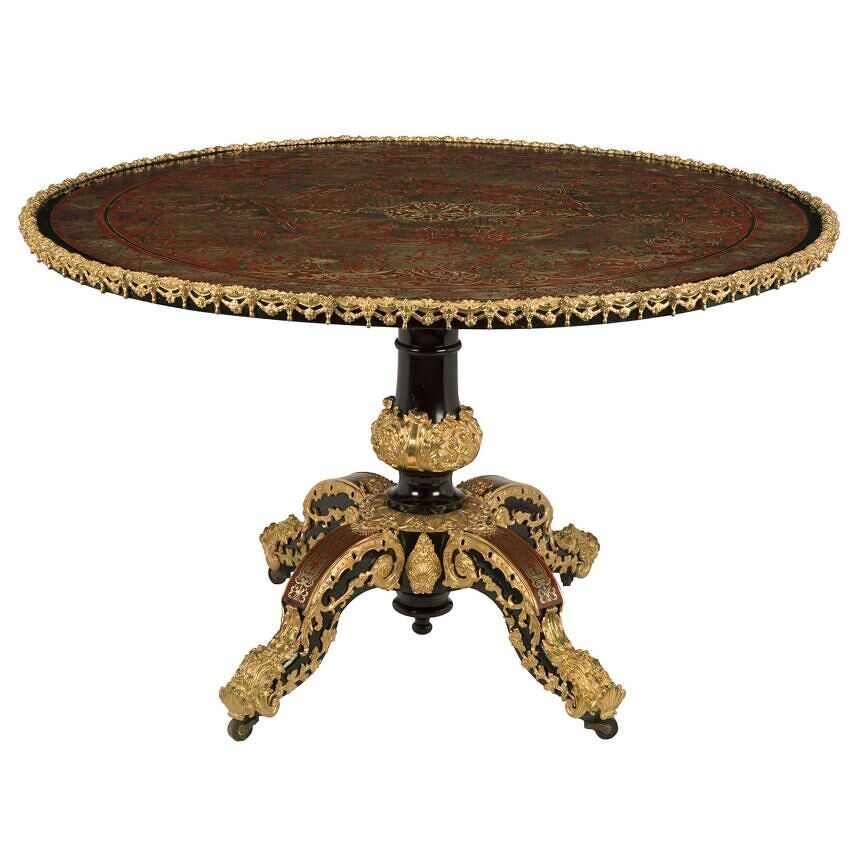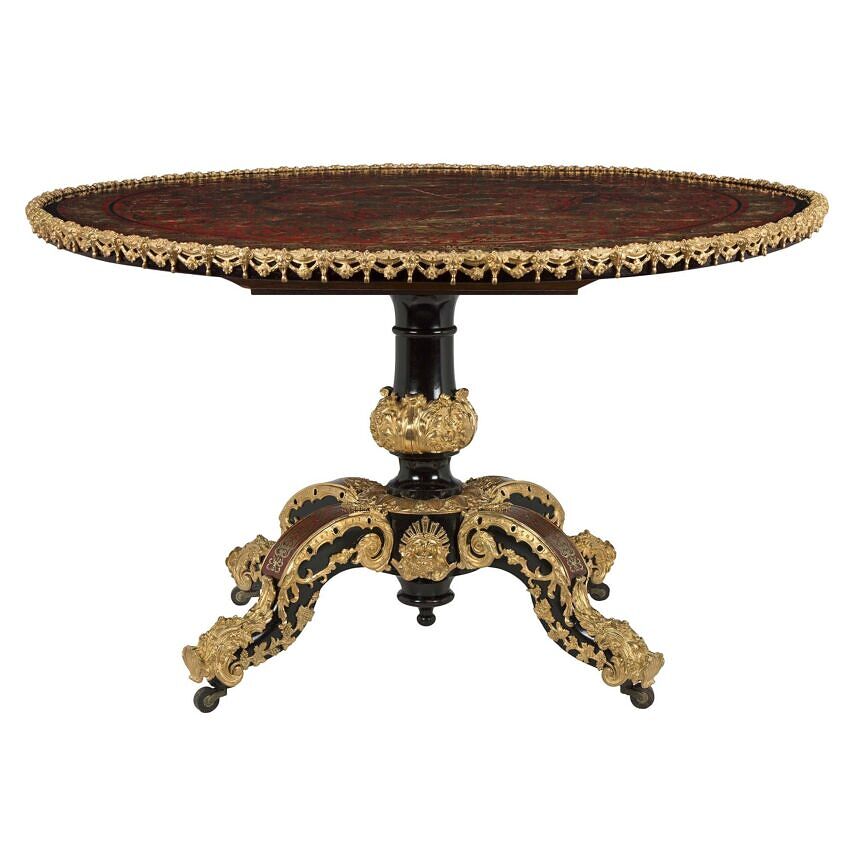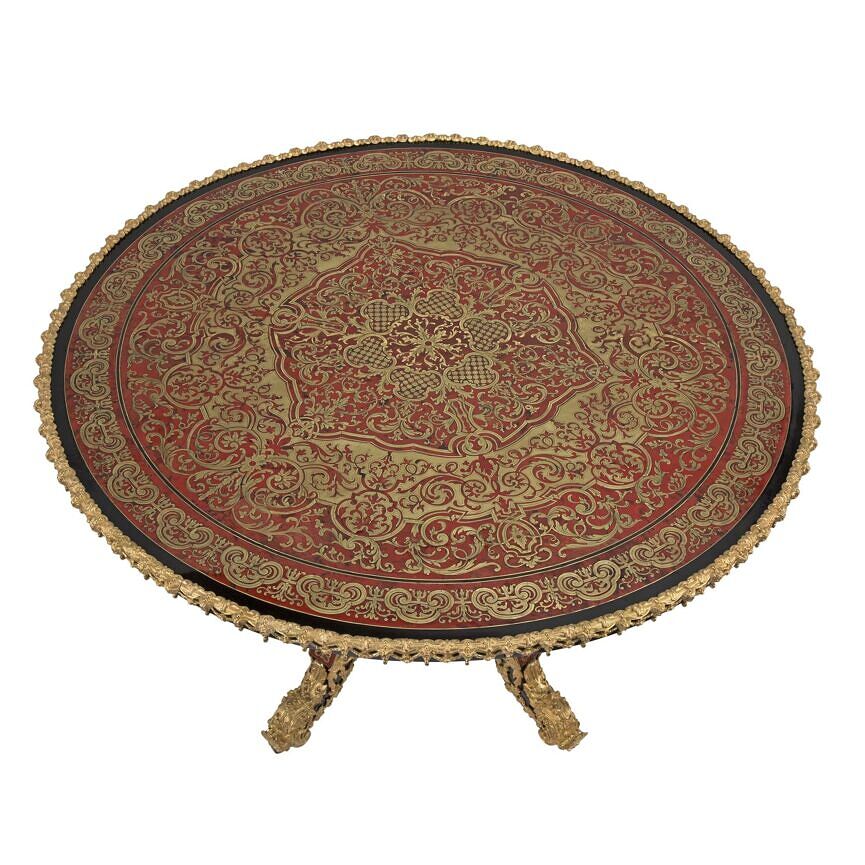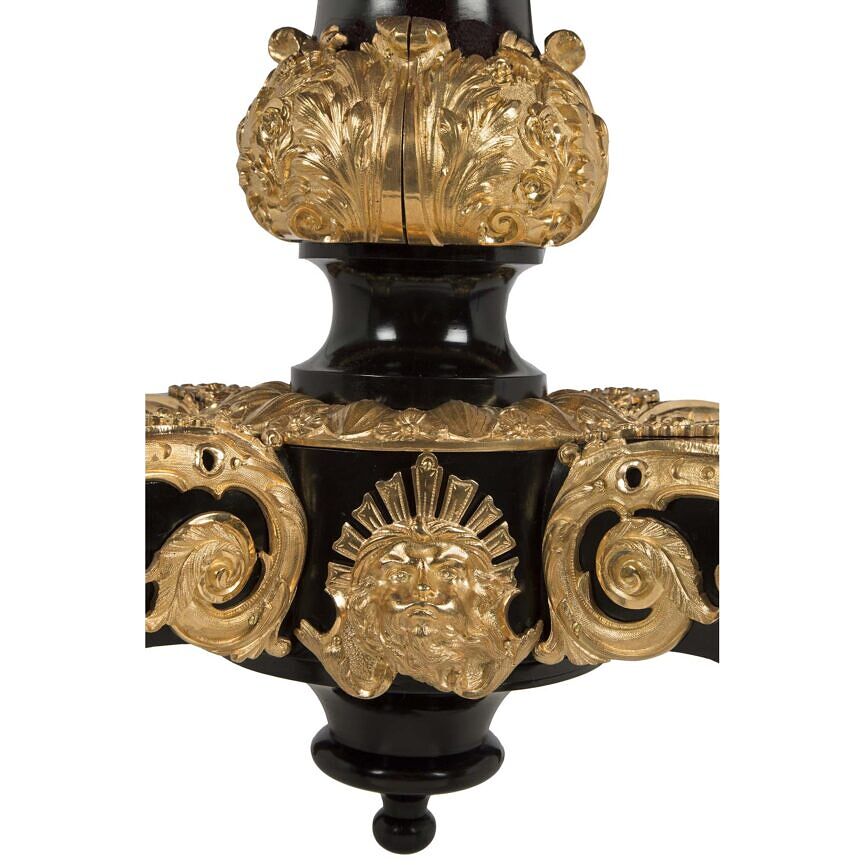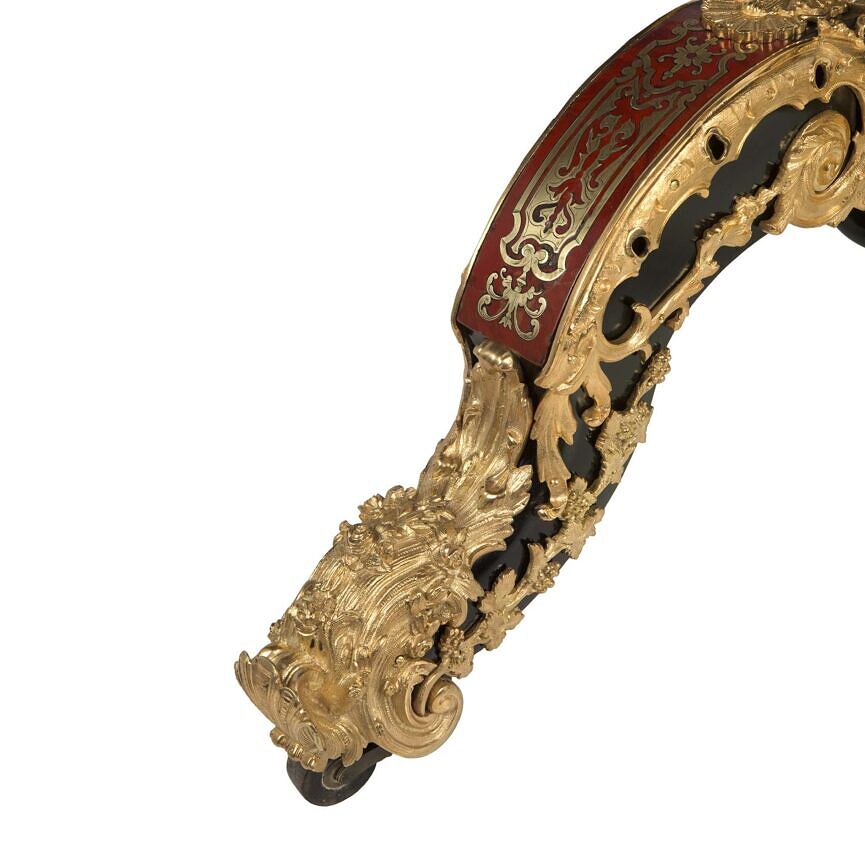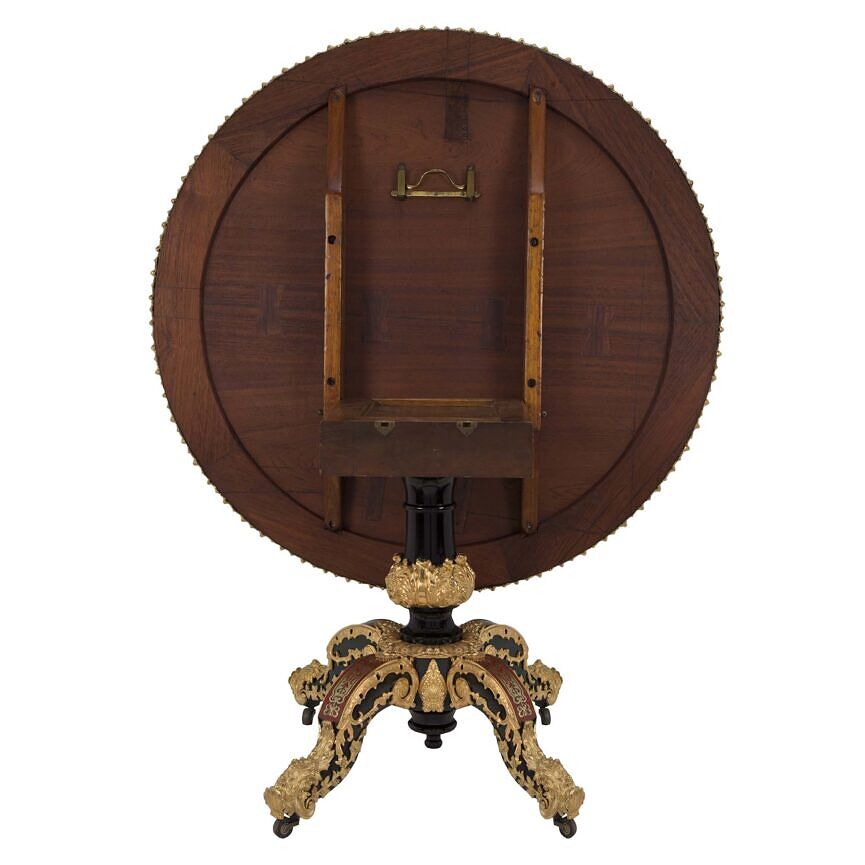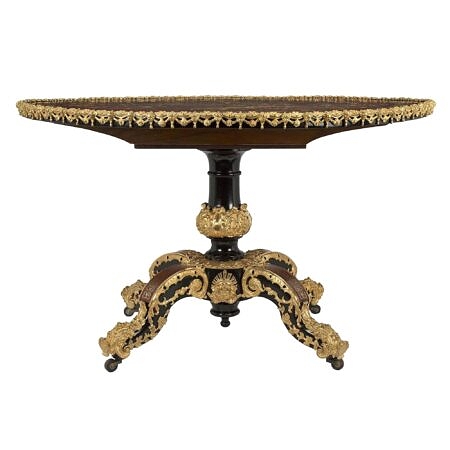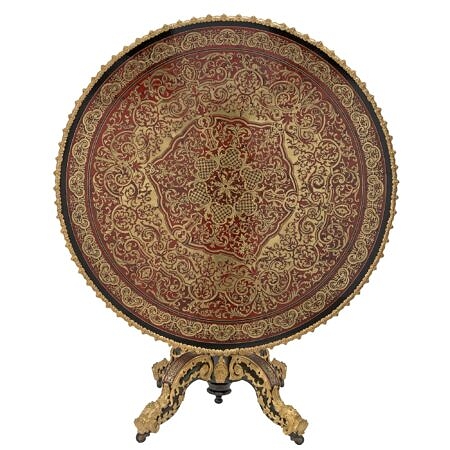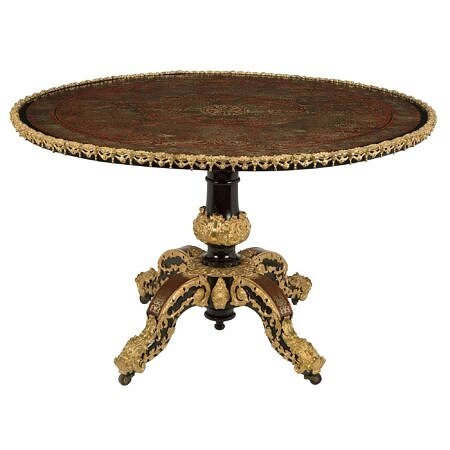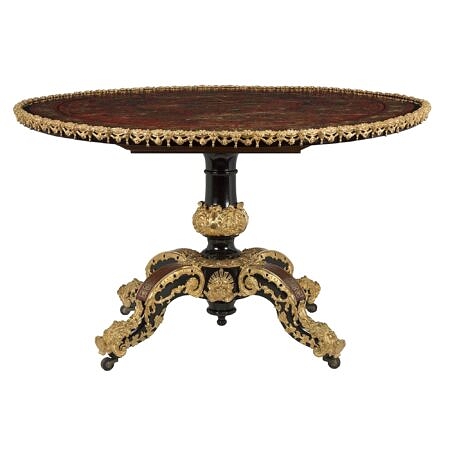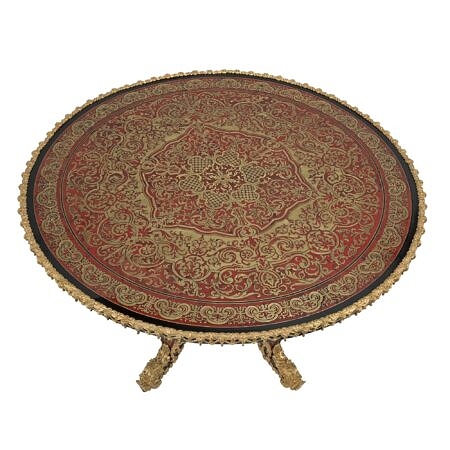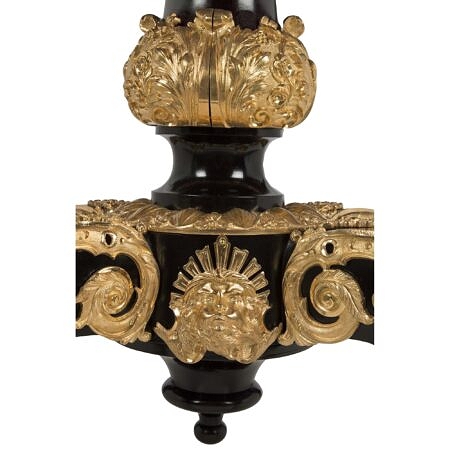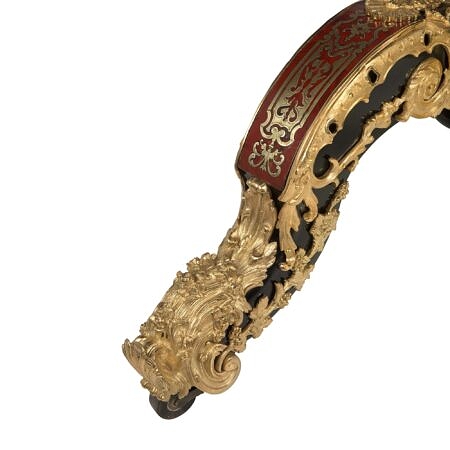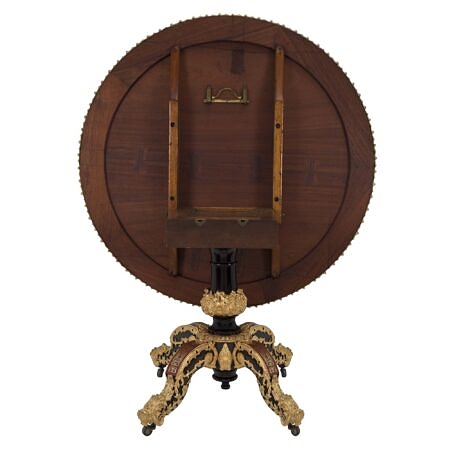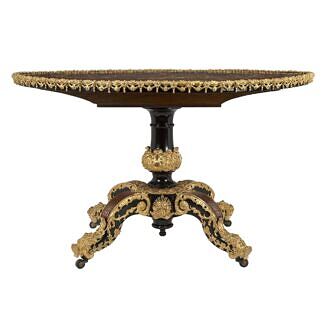A French 19th century Napoleon III period Boulle center table
Sorry, This item has sold
A spectacular and high quality French 19th century Napoleon III period Ebony, ormolu, brass and tortoise shell tilt top Boulle Center table. The table is raised by impressive S scrolled legs with their original casters. The legs are decorated with... — Read More
A spectacular and high quality French 19th century Napoleon III period Ebony, ormolu, brass and tortoise shell tilt top Boulle Center table. The table is raised by impressive S scrolled legs with their original casters. The legs are decorated with stunning foliate ormolu designs and richly chased ormolu grape clusters set on a background of ebony and tortoise shell with inlaid brass designs. The circular central support displays large ormolu acanthus leaves in a rich satin and burnished finish above a most decorative ebony inverted finial and a richly chased female mark. The sensational circular top displays masterfully executed brass inlays of floral and foliate patterns, rinceau and latice designs with fine etching set on an exceptional tortoise shell background. At the border is a richly chased and beautifully detailed ormolu band with swaging garlands, floral reserves and rams horns and tassels. The top tilts after being released by its original mechanism and is finished at the back displaying attractive butterfly splines and all the original hardware. — Read Less
- Item # 8836
-
H: 29.5 in D: 48 in
H: 75 cm D: 122 cm
- France
- 19th Century
- Boulle
-
Napoleon III Period Read More
(Napoleon III Period) -
Also known as 2nd Empire style, this highly eclectic style used many elements from various historical periods and revolutionized the use of more contemporary materials while focusing on comfort and functionality.
Chairs and settees were ornately upholstered with the use of tassels, fringe, and opulent fabrics. Throughout this time the mechanics of chairs would be entirely concealed by upholstery and decorative elements, like the Crapaud armchair.
Upholstered ottomans appeared with the creation of furniture like “le confident” or the two-person chair. Black Lacquer, Polychrome, and rattan were being used for the first time in European furniture.
- André-Charles Boulle Read More
He was the French cabinetmaker considered to be the preeminent artist in the field of marquetry, even called the most remarkable of all French cabinetmakers. Boulle was renowned as the leading cabinet-maker of French furniture in the 17th and 18th century. His fame in marquetry led to his name being given to the fashion he perfected of inlaying brass and tortoiseshell, known as Boulle. Boulle was granted lodgings in the galleries of the Louvre, which King Henri IV had set apart for the use of his most favored artists employed by the crown. Boulle received the post of Premier Ébéniste du Roi. Foreign princes and the great nobles, government ministers and financiers of his own country crowded to him with commissions. Boulle's creations included commodes, bureaux, armoires, pedestals, clock cases and lighting-fixtures, richly mounted with gilt-bronze that he modeled himself.
Pointed out to the king by Colbert as “the most skilful in his trade”, Boulle was the author of a large number of pieces of furniture in bronze and marquetry which made him the leading cabinet-maker of French furniture in the 17th and 18th century. The creativity and richness of his pieces of furniture contributed to the reputation of Versailles in this art.
Beginning in 1672, he produced all kinds of pieces of furniture for Louis XIV, his family and the court, and the name of Boulle is inseparable from the copper and tortoiseshell marquetry that made his success: the famous “Boulle marquetry”. Although he was not its inventor, he devised a new process by cutting out patterns from these materials. He thus obtained two panels: the “part” and the “counterpart”. The first was in copper on a background of tortoiseshell, the second in tortoiseshell on a background of copper. In 1684-1692, the Grand Dauphin commissioned in Boulle marquetry the panelling and parquet of his study in Versailles, lost in the 18th century.
Another major innovation of Boulle was the application of bronzes on his pieces of furniture to protect the most fragile parts. Grotesque masks, claws, friezes, foliage patterns, etc. invaded console tables, desks, studies, etc. Bronzes that are also found on clocks, wall-clocks, candelabras, ink-well stands, etc.
The celebrated cabinet-maker did not limit himself to technical or aesthetic innovations, he also created new pieces of furniture. For the bedchamber of Louis XIV at Trianon, he revolutionize in 1708 a type of piece of furniture: the chest of drawers. On exhibition today in Versailles, the two chests of drawers of the king marvellously sum up the art of Boulle: the originality of this piece of furniture in its principle and its shape; marquetry of copper and tortoiseshell and an abundance of bronze details. Moreover, they are the rare pieces of furniture identifiable from his immense production. Boulle also made for the king large flat standing desks, salon tables, jewellery caskets, monumental pendulum clocks, etc.
The beauty and perfection of his pieces of furniture earned him immense celebrity in France and in Europe: Philippe V of Spain and Maximilian-Emmanuel of Bavaria were part of his prestigious clientele. Paradoxically, Boulle was often in financial difficulty: the king had to intervene on several occasions to protect him from his creditors. He went out of fashion after his death in 1732, but his pieces of furniture were reproduced with success in the mid-18th century and especially during the Second Empire.
Payment Plan Option Learn More Choose the payment plan option at checkout and customize this payment option with our team. Payment plans are flexible and items will ship once all payments are received.


